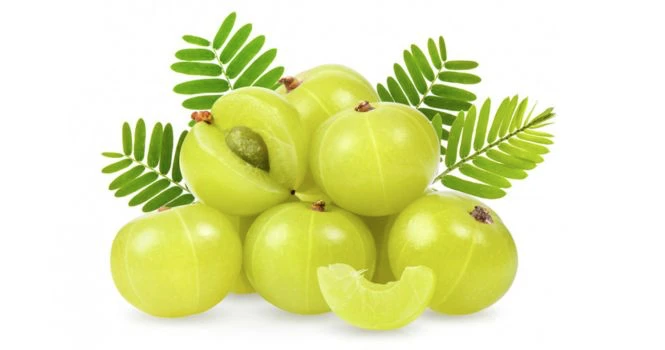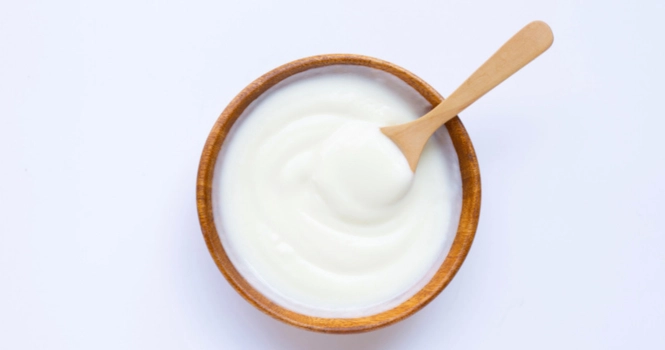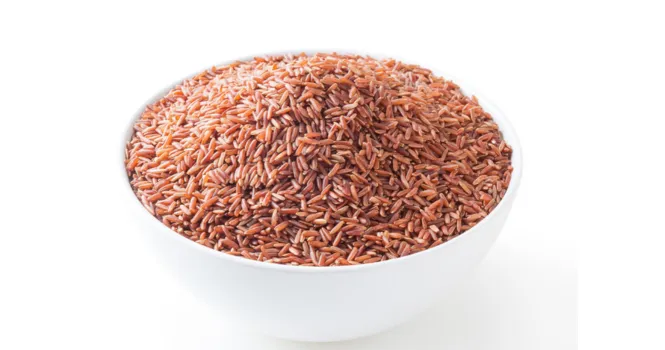Amla (Indian Gooseberry) Benefits and Side Effects

What Are The Common Names of Amla?
Amla, goes by various names in different parts of the world and in different languages. Some of these names include:
- Indian Gooseberry: This is the most common English name for Amla.
- Emblica Officinalis or Phyllanthus Emblica: These are the scientific names for Amla.
- Amalaki: This is another name used in Ayurvedic medicine.
- Nellikkai or Nellikka: In many South Indian languages, this is the common name for Amla.
- Aonla, Aonlaa, or Avla: In Hindi and several other North Indian languages.
- Amloki: In Bengali.
- Usirikaya: In Telugu.
- Anwala: In Punjabi.
- Aola: In Marathi.
- Awala: In Gujarati.
These names may have slight variations depending on the region and dialect. Amla has a rich history and is widely known for its medicinal and nutritional values, leading to its recognition in many cultures.
What is Amla?
Amla, also known as Indian Gooseberry or Emblica Officinalis, is a tree native to India that produces a fruit of the same name. The amla fruit is small, green, and has a sour, bitter taste.
Despite its taste, amla is often consumed for its potential health benefits, thanks to its high concentration of Vitamin C and other nutrients.

Amla has been used for thousands of years in Ayurvedic medicine, a traditional system of medicine from India. It’s believed to enhance digestion, promote longevity, reduce blood sugar, improve heart health, stimulate hair growth, enhance urinary health, and improve eyesight. Some also use it as an antioxidant because it’s rich in polyphenols, compounds that can help protect the body from damage by free radicals.
In addition to its medicinal use, amla is also used in a variety of culinary applications. It can be eaten fresh, though the bitter taste might be off-putting for some. More commonly, it’s used in pickles, chutneys, jams, and sweets. It’s also dried and used in traditional Indian spices and teas.
Please note that while amla is generally considered safe for most people, it can interact with certain medications and conditions. Always consult a healthcare professional before starting any new health supplement.
Types of Amla
While there is one primary species of the Amla tree, also known as the Indian Gooseberry tree or scientifically as Phyllanthus emblica, there can be some variation in the characteristics of the fruit based on environmental conditions, cultivation practices, and specific regional variations or cultivars.
Here are some known types or varieties of amla:
1. Banarasi Amla:
This variety is primarily grown in Varanasi, India. The fruit is quite large, and the tree is known for its high yield.
2. Chakaiya Amla:
This type is cultivated mainly in the Pratapgarh district of Uttar Pradesh, India. The fruits are smaller but very dense, and they contain a high amount of vitamin C.
3. NA7 Amla:
This is a high-yielding variety developed by the Indian Institute of Horticultural Research.
4. Wild Amla:
The wild amla trees can be found throughout the forests of India. Their fruits are smaller and not as palatable as cultivated varieties, but they are still used for their medicinal properties.
5. Krishna Amla:
The Krishna Amla variety is known for its small fruit size. Despite the smaller size, it’s still quite potent and beneficial. This is most commonly seen tree in south indian households.
6. BSR1 Amla:
This is a hybrid variety developed for enhanced growth and high yield.
Remember, no matter the type, all amla fruits are rich in Vitamin C and other valuable nutrients. They are used extensively in Ayurvedic medicine and also in various culinary preparations.
Nutritional Facts of 100g Amla & 1 Amla
| Nutrient | 100g of Amla | Single Amla (Approx. 67g) |
| Calories | 44 | 29 |
| Protein (g) | 0.88 | 0.59 |
| Fat (g) | 0.58 | 0.39 |
| Carbohydrates (g) | 10.18 | 6.82 |
| Dietary Fiber (g) | 4.3 | 2.88 |
| Vitamin C (mg) | 600 – 1800 | 400 – 1200 |
| Calcium (mg) | 25 | Approx. 17 |
| Iron (mg) | 0.31 | Approx. 0.21 |
| Vitamin A (IU) | 290 | Approx. 194 |
Benefits of Eating Dry Amla Vs Boiled Amla
Amla, or Indian Gooseberry, is a potent source of nutrients whether consumed in dry form or boiled form. Both types retain the health benefits of amla, though the nutritional profiles might vary slightly due to the different preparation methods.
Dry Amla
Dried amla is often consumed as a snack or used as a spice in cooking. Its benefits include:
1. Convenience and Long Shelf-Life:
Dried amla can be stored for a long time without refrigeration. It’s also easy to transport and use as needed.
2. Rich in Fiber:
Drying amla often preserves its fiber content, which can aid digestion.
3. Nutrient Dense:
Dried amla is highly concentrated in terms of its nutritional content. This means that even small amounts can offer significant benefits.
4. Versatility in Cooking:
Dried amla can be easily incorporated into various dishes, enhancing their nutritional profile.
Boiled Amla
Boiling amla is another way to prepare the fruit. Boiled amla’s benefits include:
1. Easier to Digest:
Boiling can make amla easier to digest, which may be beneficial for those with sensitive stomachs.
2. Enhanced Flavor:
Boiling can help reduce the fruit’s natural sourness and bitterness, making it more palatable for some people.
3. Maintains Nutrient Value:
While some vitamin C may be lost during boiling, many of amla’s nutrients remain intact.
4. Versatility:
Boiled amla can be used in a variety of dishes, or consumed on its own.
Health Benefits of Eating Amla on Empty stomach
Consuming amla, or Indian gooseberry, on an empty stomach in the morning has been a traditional practice in many parts of India and is said to have a number of potential health benefits.
However, it’s important to remember that these benefits can vary from person to person and more scientific research is needed to fully understand the following potential effects. Here are a few potential benefits:
1. Boosts Digestion:
Consuming amla on an empty stomach could stimulate the production of gastric juices, thus improving digestion throughout the day. Its high fiber content can also aid in better digestion.
2. Detoxification:
Amla is known for its detoxifying properties. Consuming it in the morning might help in flushing out toxins from the body.
3. Boosts Metabolism:
Amla might help in boosting metabolism, which can aid in weight management.
4. Improves Immunity:
Amla is rich in vitamin C and antioxidants, which can help in strengthening the immune system when consumed regularly.
5. Enhances Skin and Hair Health:
Due to its high vitamin C and antioxidant content, amla may have a positive impact on skin and hair health.
6. Balances Blood Sugar Levels:
There’s some evidence to suggest that amla might help in regulating blood sugar levels, which could be beneficial for individuals with diabetes.
Remember that everyone’s body responds differently to dietary changes.
While amla is generally safe for most people, it’s important to consult with a healthcare provider or a nutritionist before making significant changes to your diet, especially if you have underlying health conditions or are taking medication.
Health Benefits of Amla for Skin
Amla is packed with nutrients such as Vitamin C, antioxidants, and other beneficial compounds, which can provide several potential health benefits for both skin and hair.
1. Improves Complexion:
Amla is rich in antioxidants and Vitamin C, which can help to brighten the skin and improve your complexion.
2. Delays Aging Signs:
The high content of antioxidants and Vitamin C in amla can help to reduce the appearance of fine lines and wrinkles, promoting a youthful appearance.
3. Reduces Pigmentation:
Regular use of amla can help in reducing pigmentation and blemishes on the skin.
4. Fights Acne and Pimples:
Its anti-inflammatory and antibacterial properties may help in treating acne and pimples.
5. Repairs Damaged Tissues:
Vitamin C in amla aids in collagen production, which is important for skin repair and rejuvenation.
Health Benefits of Amla for Hair
1. Promotes Hair Growth:
Amla is known to strengthen hair follicles and stimulate hair growth, thanks to the nutrients it contains.
2. Treats Dandruff and Scalp Conditions:
The antibacterial, anti-inflammatory, and antifungal properties of amla can help in treating dandruff and other scalp conditions.
3. Prevents Premature Greying:
The antioxidants and vitamin C present in amla can help to prevent premature greying of hair.
4. Improves Hair Health:
Amla is rich in essential fatty acids, which strengthen hair follicles, giving your hair strength and luster.
5. Prevents Hair Loss:
Amla can help to reduce hair loss by strengthening the hair shaft and reducing breakage.
Remember, it’s always advisable to do a patch test before applying any new substance to your skin or scalp to make sure you don’t have an adverse reaction.
Also, while topical applications can provide certain benefits, maintaining overall health through a balanced diet and lifestyle will give the best results for both skin and hair health.
Side Effects of Amla
While it has numerous health benefits, but like any food or supplement, amla can also cause side effects in some people.
1. Hyperacidity:
Amla is highly acidic in nature. Consumption of amla can sometimes exacerbate acid levels in the stomach, leading to heartburn or acidity, especially in people who already suffer from these conditions.
2. Blood Thinning:
Amla has blood-thinning properties. This could be problematic for people with bleeding disorders or those taking blood-thinning medications. It is advisable for such individuals to consult with a healthcare provider before consuming amla.
3. Allergic Reactions:
Some people may experience an allergic reaction to amla, including skin rash, itching, trouble breathing, or swelling of the face, tongue, or throat.
4. Lower Blood Sugar Levels:
Amla is known to regulate blood sugar levels, but in some cases, it might lower blood sugar levels too much, causing hypoglycemia. This is particularly important for individuals with diabetes or those on medication to control their blood sugar levels.
5. Diuretic Effect:
Amla has a diuretic effect, meaning it increases urine production. While this can be beneficial for flushing out toxins, it could lead to dehydration if not balanced with sufficient fluid intake. It can also affect individuals with kidney problems.
6. Interaction with Medication:
Amla may interact with certain medications, especially those for hypertension, diabetes, and blood-thinning, leading to either increased or reduced effectiveness of these drugs.
These potential side effects are not typically severe, and amla is generally considered safe when consumed in moderate quantities.
However, individuals with specific health conditions or those taking certain medications should consult with a healthcare provider before adding amla to their diet.
It’s also worth noting that most side effects occur due to overconsumption. So, it’s best to consume amla in moderation.
How to Prepare Amla Berries
- Rinse the amla berries thoroughly under running water to remove any dirt or residue.
- Pat them dry using a clean towel.
- You can cut the amla into smaller pieces by cutting around the pit (it has a very hard seed inside that is not generally consumed)
- Once cut, amla berries can be used in a variety of recipes such as amla pickle, amla candy, or can be consumed fresh.
How to Prepare Amla Juice at Home
1. Rinse the amla berries thoroughly and pat them dry.
2. Cut the amla into pieces and remove the seeds.
3. Add the amla pieces to a blender or a juicer. Add a bit of water if necessary.
4. Blend until you have a smooth mixture.
5. Strain the juice using a fine sieve to remove any remaining pieces.
6. Optionally, you can add a sweetener like honey or a bit of salt to taste.
7. Serve fresh for the best taste and nutritional benefits.
How to make Amla Hair Oil at Home
1. Take a few amla fruits, cut them into pieces, and dry them in the sun until they are completely dehydrated.
2. Once dry, grind them into a fine powder.
3. Take a suitable carrier oil such as coconut oil or sesame oil. Warm it slightly in a pan.
4. Add the amla powder to the oil and let it cook on low heat for about 10-15 minutes.
5. Allow the mixture to cool down.
6. Strain the oil using a cheesecloth or a fine sieve to remove the amla particles.
7. Store the amla hair oil in a clean, airtight bottle.
To use, massage the oil into your scalp and through the length of your hair. Allow it to sit for at least 30 minutes (or overnight for more intense conditioning) before washing it out with your regular shampoo.
Please remember to do a patch test for any allergic reactions before using amla oil or juice on your skin, hair, or ingesting it.
Frequently Asked Questions
What Happens If You Eat Amla Everyday?
Eating amla daily can offer several health benefits given its high vitamin C and antioxidant content.
Regular consumption may improve digestion, boost immunity, enhance skin and hair health, and help regulate blood sugar levels.
Remember that individual responses to daily amla intake can vary and more scientific research is needed to confirm these effects.
What Are the 10 Benefits of Amla?
- Boosts Immunity: Amla is rich in vitamin C, which can strengthen the immune system.
- Aids Digestion: High in fiber, amla can support healthy digestion.
- Regulates Blood Sugar: Some studies suggest amla can help regulate blood glucose levels.
- Enhances Hair Health: Amla is often used in hair products to strengthen the hair and scalp, promote hair growth, and prevent premature graying.
- Improves Skin Health: Antioxidants in amla may help reduce signs of aging and improve skin complexion.
- Supports Heart Health: Amla might help reduce cholesterol levels, supporting cardiovascular health.
- Improves Eye Health: Amla contains compounds that are believed to improve vision and eye health.
- Enhances Liver Health: Amla may support liver function and help in detoxification.
- Fights Inflammation: Amla has anti-inflammatory properties that may reduce inflammation in the body.
- Acts as a Diuretic: Amla may help the body eliminate excess fluids and salts, thus aiding in managing high blood pressure.
What Diseases Does Amla Cure?
While amla is a highly nutritious food and can support general health and well-being, it is not a cure for diseases. However, its antioxidants, vitamins, and minerals can support overall health and may help manage some chronic conditions, such as diabetes and heart disease. It’s always essential to consult with a healthcare provider for medical advice.
Does Amla Have Side Effects?
In general, consuming amla in moderate amounts as part of a balanced diet is safe and healthy. However, consuming large amounts of amla might cause some side effects like diarrhea or upset stomach due to its high fiber and vitamin C content.
Who Should Avoid Amla? Who Cannot Eat Amla?
People with specific health conditions may need to limit or avoid amla. This includes those with bleeding disorders, as amla may increase the risk of bleeding.
People who are allergic to amla should also avoid it. Furthermore, if you are pregnant or breastfeeding, consult with a healthcare provider before consuming amla.
What Is the Best Time to Eat Amla Daily?
Eating amla on an empty stomach in the morning is often recommended for maximum health benefits, particularly for digestive health.
The best time can depend on individual health and dietary needs.
Can I Eat Raw Amla?
Yes, raw amla can be eaten and is a great way to enjoy its health benefits. However, due to its sour taste, many people prefer to incorporate it into dishes or consume it as a juice or supplement.
Is Amla a Blood Thinner?
Amla has been shown to lower platelet aggregation, which might affect blood clotting. Therefore, if you have a bleeding disorder or are taking blood-thinning medication, consult with a healthcare provider before consuming amla.
What Is the Best Way to Eat Amla?
The best way to eat amla can depend on individual preference. Some people enjoy it raw or juiced, while others prefer it cooked or as a supplement.
Regardless of how you consume it, the most important thing is to include it as part of a balanced, varied diet.
How Much Protein Is in 1 Amla?
A single amla fruit, which weighs approximately 67 grams, contains about 0.59 grams of protein.
Can We Eat Amla at Night?
Yes, it’s generally safe to eat amla at any time of the day, including at night. However, individual reactions can vary, so if you find that eating amla at night causes any digestive discomfort, you might want to consume it earlier in the day.
How Much Amla Is Safe per Day?
There’s no set “safe” amount of amla to consume each day because this can depend on factors like age, overall health, and individual tolerance.
However, consuming 1-2 amla fruits per day is generally considered safe for most people. If you’re considering consuming amla in larger quantities or as a supplement, it’s a good idea to consult your doctor before doing so.
Is Amla Hot or Cold?
In terms of Ayurvedic medicine, amla is considered a cooling food, meaning it can help balance the body’s heat (or Pitta).
Does Amla Affect the Kidneys?
Amla is high in antioxidants, which are beneficial for overall health, including kidney health. However, if you have a pre-existing kidney condition, it’s best to consult with a healthcare provider before making significant dietary changes or starting new supplements.
Can Amla Damage the Liver?
Amla is generally beneficial for liver health due to its antioxidant content. However, like any food or supplement, it’s possible to consume too much, and excessive amounts could potentially cause harm.
Always consult with a healthcare provider if you have any concerns about your liver health.
What Is the Deficiency in Amla?
Amla is a nutrient-dense fruit that’s particularly high in vitamin C. It also contains other nutrients, like fiber, antioxidants, and minerals. However, it’s low in certain nutrients like vitamin B12 and D, which are found in higher amounts in animal products.
Does Amla Affect Sperm?
Amla is rich in antioxidants, which can potentially benefit sperm health by reducing oxidative stress. However, more research is needed to confirm these effects, and individual responses can vary.
Can Amla Cause Gas?
Amla is high in fiber, which can cause gas in some people, especially if you’re not used to consuming high-fiber foods.
Does Amla Increase Acidity?
Amla is actually considered alkaline and is often used in traditional medicine to balance stomach acidity and improve digestion. However, everyone’s body responds differently to different foods, so if you find that amla increases your acidity, it may be best to avoid it.
Can Amla Cause Joint Pain?
Amla is generally not associated with causing joint pain. In fact, due to its anti-inflammatory properties and high vitamin C content, which aids in collagen production, amla could potentially be beneficial for joint health.
However, everyone’s body responds differently to different foods, so if you notice any adverse effects after consuming amla, it’s best to consult with a healthcare provider.
How Can I Store or Preserve Amla?
Fresh amla berries can be stored in the refrigerator for about a week. For long-term storage, amla can be preserved in several ways:
1. Drying: Amla can be sun-dried or dehydrated and then stored in an airtight container.
2. Pickle: Amla can be made into a pickle using salt, oil, and spices, which can be stored for several months.
3. Freezing: You can also freeze amla. Cut the berries into smaller pieces, remove the seeds, and store them in a freezer-safe container or bag.
![]()












